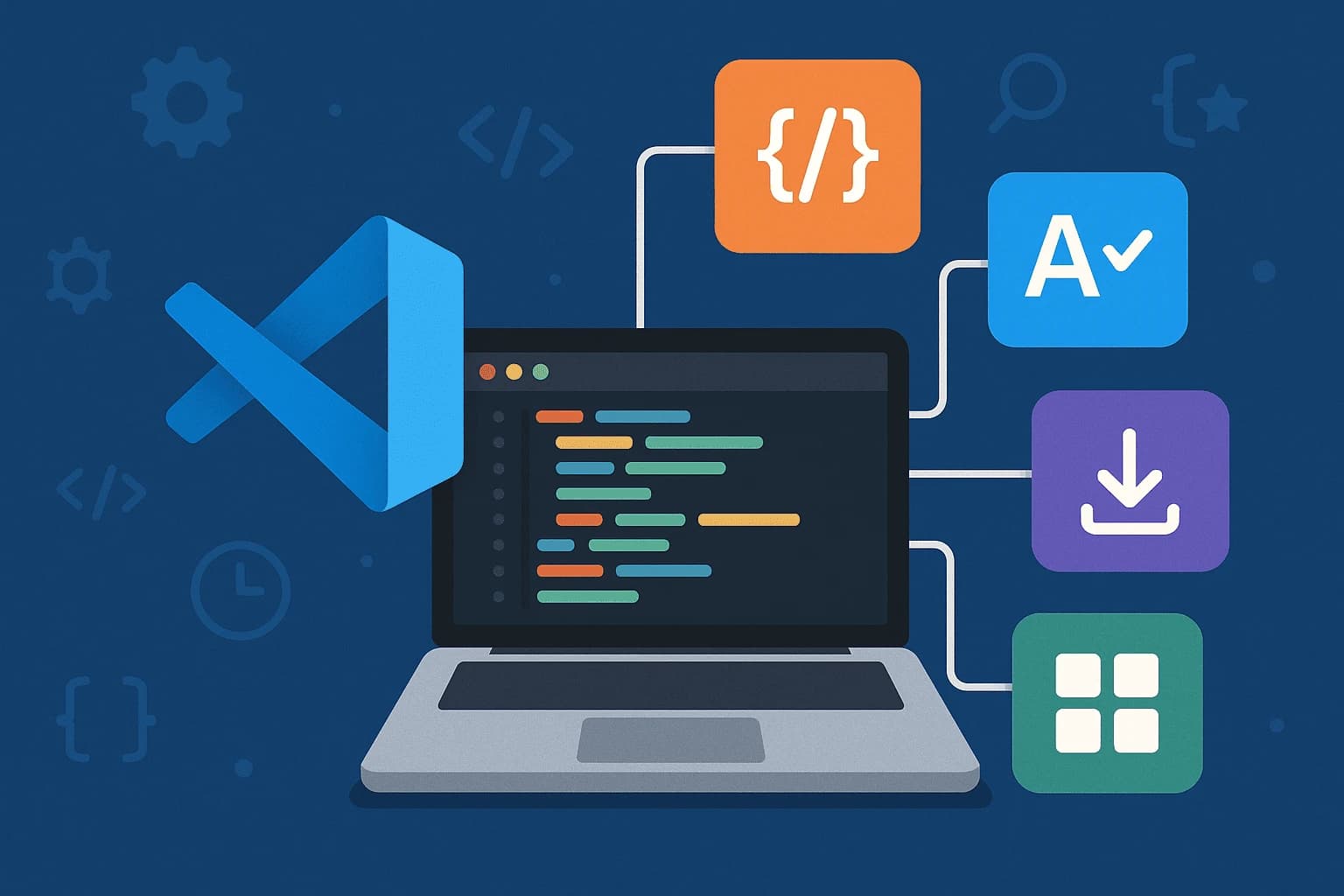
* All product/brand names, logos, and trademarks are property of their respective owners.
In 2025, documentation is no longer an afterthought—it’s a core pillar of software development. Whether you're building a small open-source project or scaling a global SaaS platform, the way you document your work directly affects how teams collaborate, onboard new developers, and ship faster. As the tech ecosystem grows more complex—with AI agents, microservices, and remote teams now the norm—streamlining knowledge sharing has become mission-critical.
Modern developers rely heavily on documentation not just to understand code, but to integrate APIs, debug issues, set up environments, and contribute to projects efficiently. The expectations from documentation have evolved: it's not enough for it to be comprehensive—it must be dynamic, intelligent, and deeply integrated with daily workflows.
Enter a new wave of documentation tools designed to meet this demand. In 2025, the landscape is richer than ever, featuring everything from static-site generators to AI-powered doc engines that can analyze your codebase and write the first draft for you. Tools like GitHub Copilot’s Documentation Agent and AWS Kiro are reshaping how teams think about knowledge transfer. They don't just assist—they automate.
But with so many options available, choosing the right tool can feel overwhelming. Should you use a static generator like MkDocs for a dev-facing library? Or opt for a hosted solution like Document360 for an internal knowledge base? And what about tools that integrate directly with GitHub to auto-update docs from pull requests?
In this blog, we'll break down the current documentation landscape, compare the best tools across different categories, and explore how AI is transforming the future of documentation. We'll also share tips for choosing the right platform based on your team's needs and peek into emerging trends that are already shaping tomorrow's documentation experience.
The documentation ecosystem in 2025 is incredibly diverse, reflecting the wide range of use cases developers and teams face. Whether you're documenting APIs, building user manuals, or maintaining internal knowledge, there’s a specialized tool to streamline the process. Let’s explore the three major categories of documentation tools making waves this year.
Static site generators are a favorite among open-source communities and developer-focused teams. Tools like MkDocs, Docusaurus, and Sphinx enable developers to write documentation in Markdown, version it with Git, and deploy fast-loading, SEO-friendly sites.
MkDocs: Lightweight and Python-based, great for technical projects with built-in support for themes and plugins.
Docusaurus: Powered by React, ideal for product documentation with customizable UI and support for multi-language docs.
Sphinx: Favored in the Python community, supports reStructuredText and auto-generates documentation from docstrings.
These tools are best suited for teams that prefer a docs-as-code approach and want full control over hosting and styling.
For teams working with REST, GraphQL, or gRPC APIs, platforms like SwaggerHub, Redocly, Stoplight, and ReadMe offer end-to-end API lifecycle management. These tools support OpenAPI specifications and let teams auto-generate live, interactive docs that developers can test in real time.
SwaggerHub: Great for collaboration and API standard enforcement.
Redocly: Known for high-performance rendering and flexible theming.
ReadMe: Adds personalization, user analytics, and developer onboarding workflows.
These platforms shine when you need interactive API documentation that updates in sync with evolving specs.
Not every documentation tool is built for public-facing content. Teams often need secure, searchable internal platforms. Here, tools like Notion, Confluence, Slite, and Document360 dominate.
Notion: Loved for its simplicity, templates, and database-style documentation.
Confluence: Deep integration with Jira and project management workflows.
Document360: Designed specifically for technical knowledge management with advanced search, version control, and analytics.
These tools help teams centralize institutional knowledge, making onboarding, training, and team communication smoother.
From solo developers to Fortune 500 engineering teams, choosing the right tool depends on your project’s scale, audience, and required features. But in all cases, documentation is no longer just a “nice-to-have”—it’s the operating system of modern development teams.
If 2024 introduced AI into the developer documentation space, then 2025 is the year it's taking over—intelligently, contextually, and autonomously. The biggest breakthroughs in developer productivity are now powered by AI documentation tools that automate, refine, and personalize the documentation process like never before.
GitHub Copilot Documentation Agent: This year, GitHub extended Copilot to handle more than code. Its new Documentation Agent reads through pull requests, interprets code changes, and drafts or updates relevant documentation. It even suggests README improvements and usage instructions—right from within your IDE or GitHub UI.
AWS Kiro (Preview): Amazon’s new “agentic” IDE assistant, Kiro, promises to eliminate what it calls “vibe coding” by turning tribal developer knowledge into structured, queryable documentation. It acts like a live teammate, answering “why was this done?” directly from code, chat history, or ticket trails.
Mintlify Docs: Still a favorite in 2025, Mintlify auto-generates docs for APIs and codebases by analyzing file structures, comments, and workflows. Its latest updates include natural language querying and GitHub PR summaries.
These tools reflect a shift from manual maintenance to intelligent documentation, where AI understands code context and developer intent.
Instead of writing documentation line-by-line, developers are now reviewing AI-generated drafts that summarize code changes, behavior, and even testing logic. This reduces overhead and ensures always-updated documentation tied to code.
Imagine asking your documentation: “What endpoints use this schema?” or “How does this service handle failure?” Tools are integrating conversational AI to allow exactly that—querying documentation like a chatbot trained on your codebase.
Future documentation platforms are becoming more UX-conscious, offering usage tracking, heatmaps, and feedback loops. This means teams can now optimize documentation like they do with product features.
AI-powered documentation isn't just a trend—it's a strategic necessity. It cuts down on repetitive tasks, ensures better team alignment, and gives developers back their most valuable asset: time. The next generation of tools isn’t just about storing knowledge—it’s about activating it.
With so many documentation tools on the market in 2025, choosing the right one boils down to the features that actually impact developer workflows. Modern dev teams expect tools to be fast, collaborative, automated, and deeply integrated into the way they already work.
Let’s break down the must-have features for developer documentation platforms today.
Version control isn’t just for code anymore—it’s critical for docs, too. Tools like Docusaurus, MkDocs, and even some SaaS platforms offer Git-based workflows that let developers:
Track every change in documentation like code commits
Roll back to previous versions
Collaborate via branches and pull requests
This docs-as-code approach ensures that documentation remains part of the development lifecycle, rather than a separate afterthought.
In 2025, the best documentation tools plug directly into CI/CD pipelines. For example:
Automatically rebuild docs on every push to main
Validate links, syntax, and structure via pre-deploy checks
Deploy to staging or production environments with minimal manual effort
Platforms like GitLab, Netlify, and Vercel offer seamless documentation deployment. This makes it easier for teams to keep docs up-to-date and ship changes faster—without additional steps.
With globally distributed dev teams, real-time collaboration is a top priority. Tools like Notion, Slite, and Confluence enable multiple contributors to:
Co-edit documents in real-time
Leave comments and suggestions inline
Tag team members for async reviews
This mirrors how teams work in tools like Google Docs or GitHub, reducing friction and accelerating documentation velocity.
Search is the front door of documentation. Tools now offer:
Full-text search with typo tolerance and filters
Usage analytics: Which pages are read most? Where do users drop off?
Custom experiences: Serve tailored content based on user roles or permissions
These features help documentation evolve from a static asset into an interactive, data-informed product that grows with your team.
In 2025, the best documentation tools are those that feel invisible—blending into existing workflows while enhancing knowledge sharing at scale. If your tool doesn’t offer version control, CI/CD integration, or collaborative editing, it’s already falling behind.
With dozens of documentation platforms available in 2025, developers and engineering leaders need a clear strategy for picking the right tool—and using it effectively. Whether you're part of a lean startup or a global enterprise, the right documentation platform can make or break your team’s productivity and product clarity.
Here’s a framework to help you make smart decisions when evaluating documentation tools this year.
Start by considering your team structure and project complexity:
Small teams or solo devs: Lightweight tools like MkDocs or Notion are perfect—quick to set up, easy to maintain.
Mid-sized teams: Look for tools with multi-user support, version control, and integrations (e.g., Docusaurus with GitHub Actions).
Enterprise scale: Prioritize platforms with access control, audit logs, analytics, and security compliance (e.g., Document360, Confluence).
Also consider your programming language ecosystem. For example, Sphinx is ideal for Python-based projects, while Docusaurus is great for JavaScript-heavy stacks.
Open-source documentation tools offer customization, data ownership, and flexibility. But they may require more dev time to manage infrastructure.
On the other hand, SaaS solutions like GitBook, ReadMe, or Document360:
Offer premium features (e.g., AI help, analytics, branded UIs)
Reduce devops overhead
Come at a cost—and often with data governance considerations
Best Practice: Start with open-source for internal or dev-facing docs. Use SaaS for scaling external, client-facing documentation.
If your documentation includes sensitive data, or serves regulated industries (like fintech or healthcare), you need:
Role-based access control
SSO and 2FA
SOC2, GDPR, HIPAA compliance options
Many top-tier platforms now offer enterprise-grade controls and scalable pricing as you grow.
No matter which platform you choose, remember: tools won’t fix bad documentation habits. Establish a culture of documentation by:
Making docs part of your Definition of Done
Assigning “documentation owners” per project
Automating doc updates with GitHub Actions or AI agents
The best tools amplify good habits. But culture drives consistency and quality.
As we navigate through 2025, developer documentation is undergoing a significant transformation—from static text files and scattered notes to intelligent, AI-assisted ecosystems that power real-time collaboration and continuous knowledge flow.
In this blog, we explored the evolution of documentation tools across categories: from static-site generators like MkDocs and Docusaurus, to API-first platforms like SwaggerHub and ReadMe, and internal knowledge bases such as Notion and Document360. We highlighted how today's developers expect features like Git integration, CI/CD compatibility, real-time editing, and custom search analytics to be standard—not optional.
More importantly, we unpacked the rise of AI-powered tools—like GitHub Copilot Agent and AWS Kiro—that are automating what was once a tedious process. These innovations are enabling teams to shift focus from “keeping documentation alive” to “letting documentation drive development.” That’s a big leap forward.
But technology alone isn’t enough. Great documentation still requires clarity, intent, and consistency. The best tools support these qualities; they don’t replace them. As a developer, tech lead, or content strategist, your role is to create a culture where documentation is a first-class citizen—visible, versioned, and valued.
Documentation isn’t just about writing—it’s about enabling every developer to build better, faster, and together.

5 December 2025
19 November 2025
No comments yet. Be the first to comment!